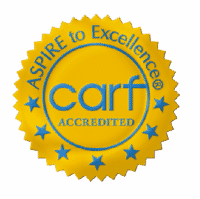
By Trafalgar’s Editorial Team
This Content is Created By Aneisa Maley, B.A, M.A
Hi, there, my name is Aneisa, and I am currently a counsellor at Trafalgar Residence. Today we’re going to be engaging in a meditation for progressive muscle relaxation.
When experiencing anxiety, stress or worry, our body generally responds by tightening up muscles in the body. We tend to unconsciously do this, and as a result, we hold tension in different parts of our body.
Today’s progressive muscle relaxation will be using mindfulness in order to draw attention to the areas of your body in which you are holding stress. I’d like you to get started by finding yourself in a comfortable position, whether that be on the floor, on a mat, in a chair, or perhaps even sitting with your spine straight on the floor.
I’d Like you to start by closing your eyes and taking a deep breath in through your nose and exhaling. And once again, breathing deeply in through your nose and making sure on the exhale you let everything go. And one more time breathing in deeply through the nose and releasing on the exhale. Wonderful.
Now we’re going to start with a bit of a body scan. Close your eyes and become mindful, noticing your body and whatever state it is in. And just doing a slow and gentle body scan from the tip of your head to the bottom of your toes. Just noticing if there’s any tension being held in your body.
If you do notice tension, that’s okay. Do not judge it, simply notice it. Try to breathe into that space once again, taking a deep breath in through the nose and trying to focus on bringing air to the space that may be holding tension.
Okay, I’d like you to start at the tip of your head just drawing attention to what your head feels like right now. With your eyes closed, noticing the shape of your head. Noticing if there are any tingling sensations.
So once again, breathing into this space. I’d like you to take a deep breath in and as you do so scrunch your face. Tense all the muscles in your face and release with an exhale. Letting it all go.
What we want to notice is when we release, is tension being expelled from this area of our body?
So once again, breathing in and scrunching your face up tightly and on the exhale, letting it all go, even opening your mouth wide. Just letting any tension that is in that area, in your face and your forehead and your cheeks go. You can even take a moment to massage your jaw or your cheeks if that’s what feels good for you.
And then drawing attention to your shoulders. This is an area that a lot of us hold tension in. I’d like you to start by taking a deep breath in and as you do so, take this moment to just roll your shoulders back and exhale.
And once again, breathing in deeply through the nose, rolling your shoulders back and exhaling. And one more time deep breath in rolling your shoulders back. And exhale, even rolling them forward.
Taking a moment to tilt your head side to side noticing what it feels like in your shoulders, seeing if there’s any built-up stress that’s left in this area.
Once again, taking a deep breath in through the nose and breathing into this area, breathing into your shoulders and exhaling. On the next in-breath, I’d like you to bring your shoulders up as if you’re trying to touch them with your ears, breathing in and bringing your shoulders up, up, up. And exhaling, letting it drop, letting it all go. And once again, tilting your head side to side, if that’s what feels good to you.
I’d like to invite you for the rest of the day to take a moment throughout the day to simply just roll your shoulders back and tilt your head side to side. As if you’re shaking your head, no or yes. Simply noticing how this releases tension in your neck and in your shoulders.
Next, I’d like you to draw attention to your arms, once again, simply noticing what your arms feel like, what shape they take in your mind’s eye. And taking a deep breath in, breathing into this area, breathing into your arms.
Once again, noticing what do your hands feel like? What shape do your hands take? Can you feel the sensation in each finger? In your wrist? Once again, just noticing without judgment.
What each area of your arms and hands feel like. And I’d like you to take this time to take a deep breath in bringing your arms towards your body as if you’re lifting weight and on the exhale, let everything go.
Let your arms and hands become as loose as they can. And once again, on the inhale, tightening your arms up, really flexing your biceps, perhaps crunching your hand into a fist, noticing what this feels like and exhale, letting it all go, releasing and becoming soft.
And one more time really focusing on sending the air to this area on the in-breath, inhaling through the nose and on the exhale, letting it all go. Well done. All right.
I’d like you to draw attention to your stomach. This is an area a lot of us perhaps don’t necessarily acknowledge or pay attention to. It is the area in which you hope to be rising and falling when you’re breathing inwards and outwards.
So on this in-breath, I’d like you to really pay attention to how your belly rises when you inhale and contracts on the exhale. And breathing into this area, breathing in, feeling your body expand and exhaling, really just letting it all go.
If this is hard for you. I’d like you to send gratitude to this area on each in-breath, perhaps even put your hand on your stomach just to reinforce breathing in and out into this area.
Once again, inhaling and exhaling. And one last time inhaling and exhaling. Throughout the day, a lot of the time our stress levels get high and we start to breathe from our shoulders and our chest area. What we always want to do is refocus and make sure we’re doing what’s called diaphragmatic breathing, breathing into our stomach.
And our stomach is contracting with each exhale. To make sure we get the most oxygen possible and to ensure that we’re really nourishing our body.
I’d like you to take a moment and draw attention to your thighs. What do your thighs feel like in this moment? What shape do they take? Once again, breathing in and sending oxygen to this area of the body and exhaling, letting it all go.
On the next inhale, I’d like you to tense your muscles by pushing your feet into the ground and feeling them tight in. And as you exhale, let it all go.
And once again, in pushing your feet into the floor, feeling your thigh muscles tense and exhaling, letting it all go. And one more time breathing in through the nose, making sure we send all oxygen to this area of the body and exhaling, letting it all go.
Next, we’re going to draw attention to our calf muscles. Parts of our lower legs from the start of our knee all the way to our ankles, just once again draw attention to what this area of the body feels like from your knee to your ankle? What shape does it take? Is there any tense muscles in this area?
And on the inhale, I’d like you to bring your heels up off the ground, pushing your toe into the ground and tensing your calf muscles. And on the exhale, letting it all go, perhaps lifting your foot off the ground.
Shaking it a little bit, if that’s what feels good for you. And once again, breathing into this area. Tensing the muscles and once again, letting it all go on the exhale. So one final time breathing into this area of the body and exhaling, letting it all go.
And finally, our toes noticing the shape of your foot, drawing attention to each toe, seeing if you can notice its shape. Wiggling each toe, noticing what they feel like. And on the inhale, I’d like you to scrunch your feet up, scrunch your toes and on the exhale releasing.
Perhaps even passing the ball of your foot up and down, raising your heel off the ground, just drawing attention to any tension in this area. And once again, breathing into this area, scrunching your toes and on the exhale, letting it all go. And one more time sending air to this part of the body, mindfully breathing in through your nose and exhaling, letting it all go.
I’d like you to take a moment to simply ground yourself. Bringing all attention back to the breath. Breathing in deeply. Freely letting it go on the exhale. If your mind starts to deviate, simply bring it back to the sensation of the breath. Breathing in and releasing any tension on the exhale.
And I’d like you to bring this moment and send yourself some gratitude for engaging in this meditation. Bring this moment to your awareness. The fact that you engaged in the practice. Know that at any time you can engage in a body scan.
Oftentimes we have tension in each area of our body, but we may not even necessarily notice it’s there until we create tension. So once again, thank you so much for engaging in this meditation, and I hope the peace and relaxation you found can continue into your daily life.






